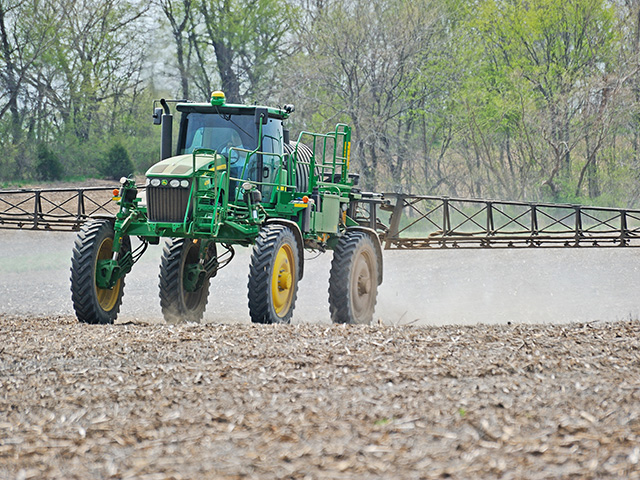Overcome Residual Herbicide Failures

Dry weather increased across the Corn Belt last spring, as drought and abnormal dryness ballooned from 29% to 66% in that region during May. Many farmers lacked the 0.5 to 1 inch of rain critical during this time frame to activate residual herbicides.
“In our area, drought was one of the big reasons we saw many residual herbicide failures,” says Dwight Lingenfelter, Penn State University Extension weed scientist. “Without rain activating or incorporating the herbicide into the weed seed germinating zone, weed control failure is common.”
Lingenfelter encourages reading herbicide labels to determine rainfall needed for activation. Typically, 0.5 inch to 1 inch of rain within the first week after application is required. “For example, Group 15 herbicides can vary from 0.5 to 0.67 of an inch needed to activate S-metolachlor, compared with 0.75 to 1 inch needed to get pyroxasulfone into the germinating weed seed zone,” Lingenfelter says.
Remember, the weeds will grow if you receive not enough rainfall to activate the herbicide. Weed seed — especially annual grasses and smaller seeded broadleaves — germinate with a lot less moisture, such as heavy dew or a light shower.
If enough rainfall does occur within three weeks after application, recharge or reach-back weed control can occur. Certain herbicides like mesotrione or isoxaflutole may offer some recharge control on small broadleaf weeds, if they are less than 1 inch tall. But once grasses escape, only a postemergence application will work.
Not all escaped weeds are equal, so a postemergence program following a foundation herbicide failure must focus on critical weeds like Palmer amaranth, waterhemp, marestail and other season-long- germinating, prolific, seed-producing weeds.
“Without scouting, growers can be fighting weeds the rest of the season,” Lingenfelter says. Without boots on the ground, it’s challenging to determine target weed species, weed size and populations to optimize postemergence treatments.
“Make sure that the planned postemergence program you originally thought would work will be adequate for the species that came through the foundation residual program,” he adds.
Another critical consideration is timely postemergence applications of multiple effective modes of action. Full application rates of overlapping residual combinations become more critical when foundation residuals fail.
Lingenfelter cautions growers to not exceed the maximum limit of residual products or a group of herbicides used in a season. Corn crop safety also is paramount with postemergence herbicides, so Lingenfelter reminds growers about the maximum corn height/growth stages for safe application.
No-till or conservation tillage systems with more surface crop residue may need higher herbicide rates. “Refer to the label or university weed control or crop production guides to determine which products recommend a rate increase,” Lingenfelter says.

The weed scientist advises farmers to understand rotational guidelines and their impact on your budget and/or cover crops when using overlapping residual herbicides. “Knowing your cropping plan 18 months out, if possible, helps plan herbicide rotation strategies,” he says.
Continued drought over extended periods can create cropping sensitivities, as some herbicides last longer in the soil. Depending on herbicide chemistry, cold and dry soils combined with different soil types, pH and organic matter can reduce chemical and microbial degradation.
Lingenfelter also encourages corn growers to watch for enhanced degradation of triazines in fields with a history of routine triazine use. “We were part of a multiyear, 16-university research study that determined enhanced degradation occurs with triazines in many soil types, except in soil that hasn’t seen triazine use,” Lingenfelter says.
One sign of degradation growers may see is with common ragweed. In the past, triazine could control ragweed with 0.75 pound per acre. It may now take 1.25 to 1.5 pounds per acre. “This could also be related to triazine-resistant weeds, so there can be multiple factors causing growers to adjust their rates,” he says.
While Mother Nature occasionally throws weather extremes, it’s wise to apply a foundation residual herbicide program followed by a postemergence application in corn and soybeans.
“In the long run, a two-pass system is the most effective and economical weed control program,” Lingenfelter says. “With a good preemergence program down, it normally offers a wider window for optimum postemergence weed control. And when extreme years throw a wrench in the system, you adjust your tools.”
Content provided by DTN/The Progressive Farmer
Find expert insights on agronomics, crop protection, farm operations and more.